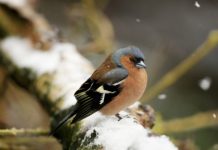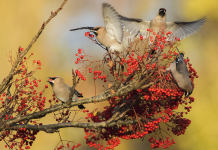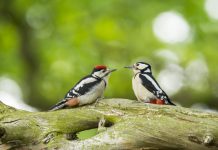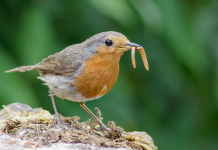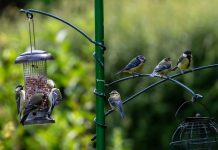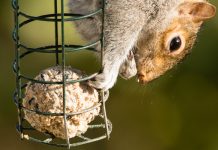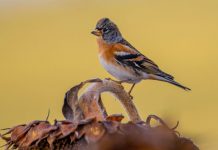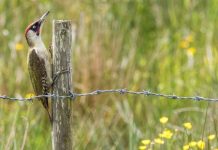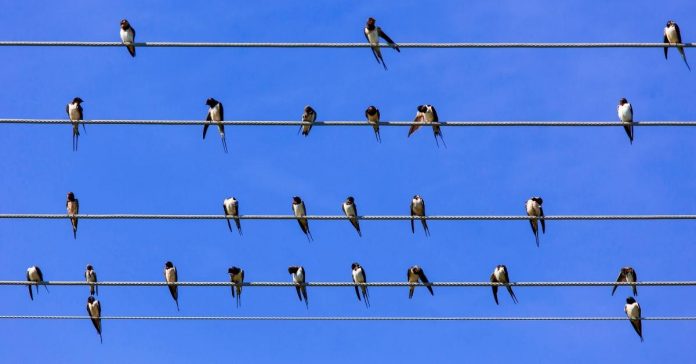There are four birds which often get confused with one another when spotted flying out and about. All four of these little birds are summer migrants, and come over to the UK from Africa to raise their young.
Swifts, swallows, sand martins, and house martins are all very similar in build – but how can we tell them apart from one another? We’ve put together a short guide to help you identify your garden visitor.
House martin
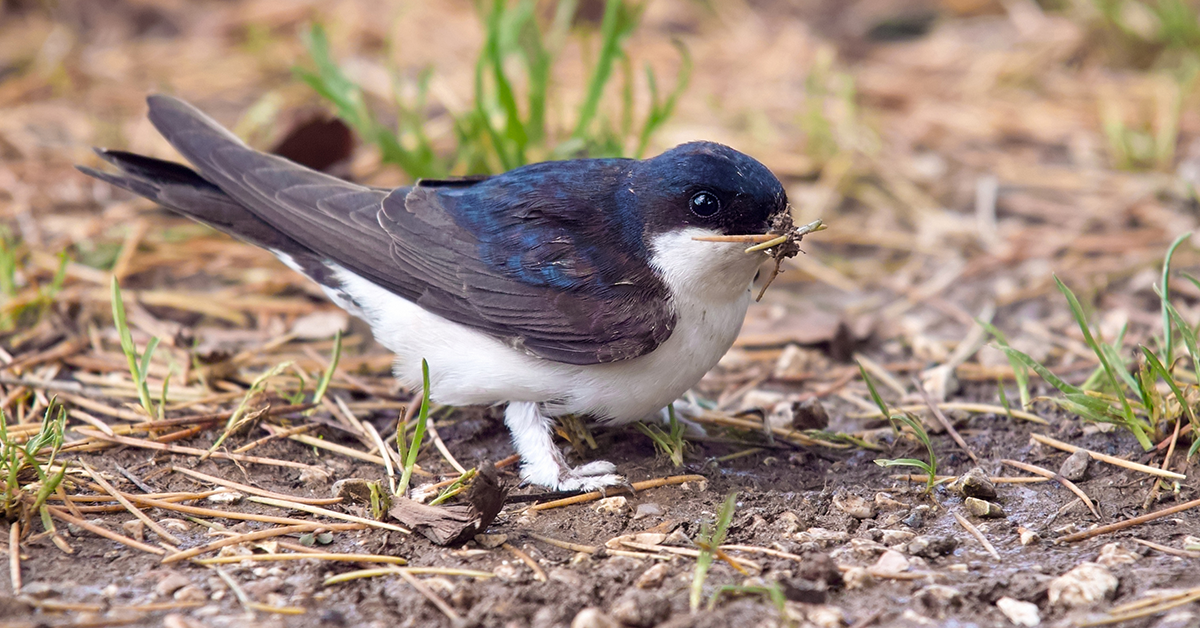
Similar to the other three birds it can often get mistaken for, the house martin spends most of its time on the wing catching insects.
These fascinating birds tend to get more easily confused for swallows because they like to nest under the eaves of buildings in mud nests they create each year. Historically, house martins used to make their nests on cliffs, but are more likely to be spotted near your roof nowadays. House martins will gather mud from near puddles to create their nests – a single house martin nest will use around 1,000 beak pellets of mud.
You can recognise a house martin from its striking blue-black upper, white underparts and rump, broad grey wings, short forked tail and white legs covered in feathers right down to its feet. Its tail is mostly what gets the house martin confused with the other three birds, but it is shorter than a swallow’s forked tail, which tend to have streamers.
Despite having a diet that’s mainly made out of flying insects, putting out mealworms could tempt them into your garden – especially if other food sources are scarce.
Sand martin
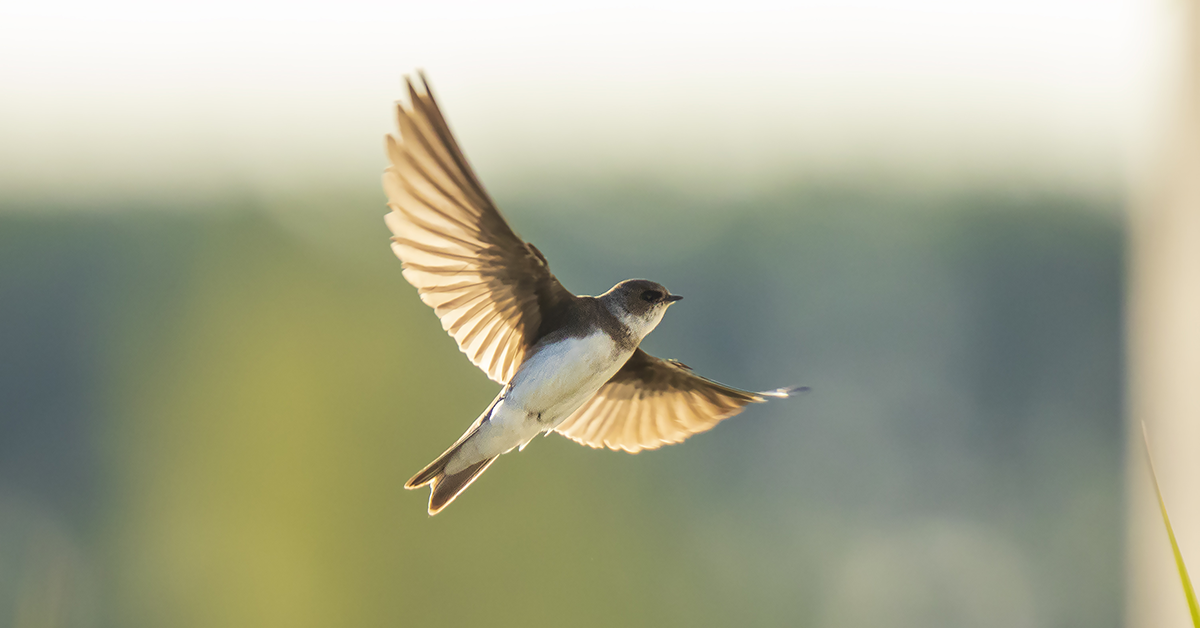
These interesting birds get their name from where they like to nest. Sand martins are more likely to be spotted around coastal areas, and love to flit about over the water in search if insects to eat. They are the smallest out of the four birds on this list, and can be quite gregarious birds during the winter and breeding season.
Sand martins like to burrow holes into dry earth or sandy banks along coastal areas. Often, whole cliff-sides can be peppered with sand martin holes where they’ve chosen to roost – these are protected by law!
You can recognise these adorable little birds by their dark brown upper parts, dark under wings, and pale underparts with a dark chest bar.
Swallow

Up close, the swallow is one of the more recognisable birds on this list. They have a striking red face and throat, dark blue back and wings which are long and pointed, pale cream feathers underneath, and a deeply forked tail with tail streamers which measure up to 7cm.
When on the wing, swallows are very easily mistaken for house martins because of some confusion over their forked tails. They can often be seen flying low over the ground trying to catch insects to eat – especially over lakes and streams. Unlike their cousin the swift, swallows don’t have difficulty perching on wires or on buildings. Swallows are rarely spotted on the ground unless they’re collecting mud for their nests.
Also similar to house martins, swallows tend to nest under the eaves of buildings. Their cup-shaped nests are very similar to that of a house martin’s. Swallows like to look for a ledge of some kind to build them on, making sure it’s sheltered from the elements.
Swift
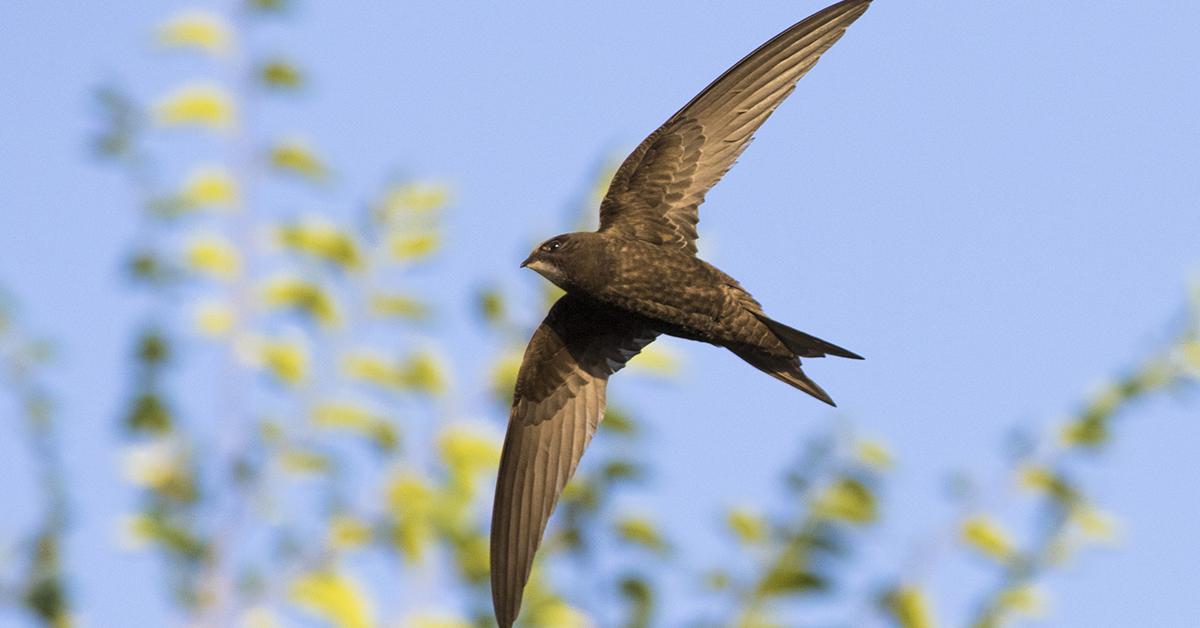
Unlike the other birds on this list, swifts very rarely land and spend most of their time on the wing. They feed, sleep, and sometimes even breed while flying in the air. They only land to build a nest, lay and hatch eggs, and to care for young. Swifts rarely have more than three chicks in the nest, and once they fledge the young will most likely be airborne between two to three years.
Most of the swifts you either hear or see around the UK have more than likely been bred here. But all swifts return to Africa during the winter months. They have difficulty perching, so you’re not likely to spot one of these fellows on the ground. Swifts like to fly at a high altitude at great speeds.
Swifts can be recognised from their sooty brown plumage, which can often appear black against the sky, their crescent-shaped wings, and short deeply forked tail.
Have you seen any of these four birds in your garden or while out and about? Let us know over on our Facebook page!
Lead image: vili45 via Getty Images.

